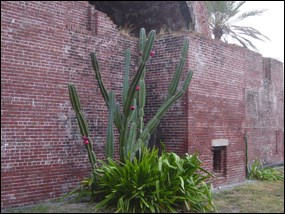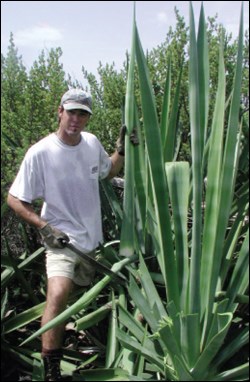|
First, Some Definitions Exotic species are introduced species, which means that they have been imported from elsewhere by humans. Many exotic species do not present a threat to native species, such as tomatoes and avocados, which are cultivated for the benefit of humans and do not become invasive. Only a small percentage of exotic species become invasive by causing harm to native species, posing a threat to human health and safety, or causing economic damage.
Now, the Problem 
Photo courtesy of Eloise M. Pratt Invasive exotic (nonnative) plant and animal species threaten the integrity of native communities. Far from their native homelands, nonnative species have a competitive advantage over native species. Because nonnative species typically lack natural predators, they can outcompete native species. They can multiply unchecked, using up valuable resources such as sunlight, water, and nutrients. Native species suffer from this intense competition. 
NPS photo In addition to the environmental havoc they wreak, invasive exotic species have major economic impacts. This economic effect is magnified in the state of Florida, where the climate and landscape are favorable to the establishment of invasives. Despite best efforts, many of the alien invaders on peninsular Florida are impossible to eradicate. Their spread, however, may be controlled by putting a stop to the release of nonnative plants and animals into the wild and by aggressively managing species that are encroaching on natural areas. Consisting of a series of islands, the geographic nature of the Dry Tortugas makes the spread and containment of invasive exotic species more manageable. Although the Dry Tortugas area was designated Fort Jefferson National Monument in 1934, it wasn't until 1992, when Dry Tortugas National Park was established, that management of invasive exotic plant and animal species became a priority. Read about the successful restoration of Loggerhead Key. Learn more about: |
Last updated: July 29, 2015
